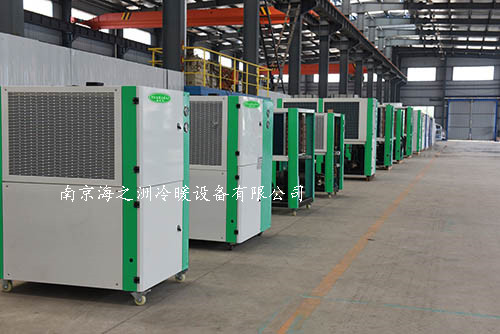7 practical heat exchanger technical questions
1. How does the heat exchanger transfer heat? A: In the most common type of wall-mounted heat exchangers, there are mainly heat transfer methods of conduction and convection. The hot fluid first transfers heat to one side of the pipe wall by means of convection heat, and then conducts heat from one side of the pipe wall to the other side, and finally the other side of the pipe wall is convectively heated. The heat is transferred to the cold fluid, which completes the heat transfer process of the heat exchanger. 2. What effect does the medium flow rate have on the heat transfer effect? Answer: The greater the flow rate of the medium in the heat exchanger, the greater the heat transfer coefficient. Therefore, increasing the flow rate of the medium in the heat exchanger can greatly improve the heat exchange effect, but the negative effect of increasing the flow rate is to increase the pressure drop through the heat exchanger and increase the energy consumption of the pump, so it is necessary to have a certain appropriate range. 3. What is the effect of the surface structure of the heat exchange tube on the heat transfer effect? Answer: The specially designed heat transfer tube surface structure, such as finned tube, nail head tube, threaded tube, etc., on the one hand increases the heat transfer area, on the other hand, the special surface spoiler greatly increases the fluid outside the tube. The degree of turbulence can improve the overall heat transfer effect of the heat exchanger in both aspects, so these surface structures are superior to the performance of the surface of the light pipe. 4. What methods are commonly used for descaling the surface of heat exchange tubes? Answer: The common methods for descaling the surface of heat exchange tubes are: steel brazing, mechanical descaling, pressure water cleaning, chemical descaling. 5. What are the common methods for heat transfer enhancement of heat transfer equipment? A: First, the structure that increases the heat transfer surface, such as: (1) using finned tubes, nail head tubes, threaded tubes, bellows, etc.; (2) The surface of the pipe is machined, spiral grooved pipe, threaded pipe, etc.; (3) The use of small diameter pipe can increase the number of pipes on the same pipe plate area and increase the heat transfer area. The second is to increase the flow rate of the fluid in the heat exchanger, which can greatly improve its heat transfer coefficient, such as: (1) Add a spoiler, such as inserting a spiral belt in the tube, and setting a baffle, a false tube, etc. outside the tube; (2) Increase the number of tubes or shells. In addition, the use of materials with good thermal conductivity to manufacture heat exchangers, anti-corrosion and anti-scaling measures for heat exchangers, and timely cleaning of scales are all means to improve heat transfer. 6. Why does the cooling water heat exchanger produce scale? Answer: Scale is formed by crystallizing dissolved salts in water and attached to the wall of the heat exchanger. It is characterized by dense and hard, strong adhesion and difficult to remove. A large number of suspended particles in water can be seeded, and other impurity ions, bacteria, rough metal surfaces, etc. have a strong catalytic effect on the crystallization process, greatly reducing the supersaturation required for crystallization, so the cooling water heat exchanger It is easy to produce scale. 7. Why does the heat exchanger tube scale? How to descale? Answer: Most of the heat exchangers are heat exchange systems with water as the heat carrier. Because some salts crystallize out from the water when the temperature rises, they adhere to the surface of the heat exchange tubes to form scale. Adding a polyphosphate buffer to the cooling water can also cause scale precipitation when the pH of the water is high. The scale formed in the initial stage is relatively soft, but as the scale layer is formed, the heat transfer conditions are deteriorated, the crystal water in the scale is gradually lost, and the scale layer is hardened and firmly adhered to the surface of the heat transfer tube. In addition, like scale, when the working condition of the heat exchanger is suitable for solution precipitation, the surface of the heat exchange tube can accumulate the scale layer formed by the crystallization of the material; when the fluid contains more mechanical impurities, the fluid is more When the flow rate is small, some mechanical impurities or organic matter will also deposit in the heat exchanger to form loose, porous or colloidal dirt. N2 Cylinder,N2 Gas Cylinder,N2 Gas Tank,Nitrogen Gas Cylinder JIANGSU NEW FIRE FIGHTING TECHNOLOGY CO.,LTD , https://www.ffo2cylinder.com
